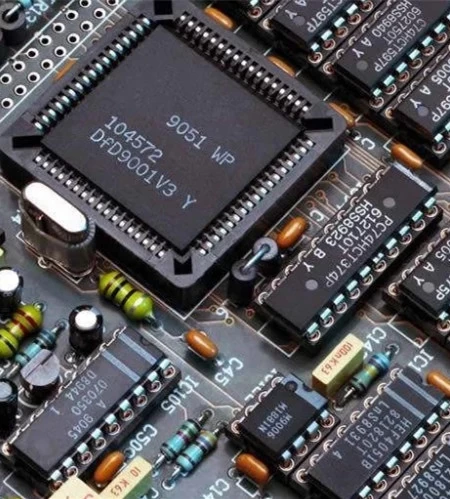In the world of modern electronics, the integrity of devices is crucial. Electronic encapsulation materials play a pivotal role in ensuring the stability, electrical connections, moisture resistance, and mechanical support of chips and systems. The selection of these materials is guided by several key principles:
High Thermal Conductivity: Essential for effective heat dissipation.
Matching Thermal Expansion Coefficients: Ensures compatibility with chip materials.
Exceptional Heat Resistance: Maintains stability under varying temperatures.
Superior Insulation: Meeting device insulation requirements.
High Mechanical Strength: Essential for processing, packaging, and application.
Cost Efficiency: Suitable for mass production and wide application.
These materials primarily consist of substrates, wiring, frames, interlayer dielectrics, and sealing materials. Here, the focus is on substrate materials.

Ceramic encapsulation materials, such as AI₂O₃, Si₃N₄, AIN, SiC, BeO, and BN, offer distinctive advantages over plastics and metals:
Low Dielectric Constant, Excellent High-Frequency Performance
Good Insulation and Reliability
High Strength, Good Thermal Stability
Low Thermal Expansion Coefficient, High Thermal Conductivity
Excellent Gas Tightness, Stable Chemical Properties
Good Moisture Resistance, Less Prone to Microcracks
Currently, widely used ceramic materials include AI₂O₃, Si₃N₄, AIN, SiC, BeO, and BN. Each possesses unique properties that cater to diverse application needs.
Let's explore some of these ceramics and their distinct characteristics:
Alumina is the most extensively used ceramic material in electronic encapsulation. However, its moderate thermal conductivity and relatively high thermal expansion coefficient limit its adaptability in high-power electronic devices.
Si₃N₄ boasts high flexural strength, excellent wear resistance, and minimal thermal expansion. Yet, its complex fabrication process and higher costs restrict its application in areas with low thermal dissipation requirements.
AIN exhibits compatibility with silicon in terms of thermal expansion, significantly higher thermal conductivity than Al₂O₃, excellent electrical insulation, and superior mechanical properties. Despite higher costs, it stands as an ideal material for high thermal conductivity demands.
SiC closely matches silicon in thermal expansion, possesses high hardness, good chemical stability, and superior thermal conductivity. However, its polycrystalline nature leads to drawbacks like significant dielectric loss and low dielectric strength.
BeO, though mature in production, faces challenges due to its toxic powder and high sintering temperatures, limiting its widespread use, especially in high-temperature dissipation applications.
BN, prized for its high thermal conductivity, stable thermal performance, low dielectric constant, and excellent insulating properties, finds applications in various fields but faces limitations due to high costs and thermal expansion coefficient mismatch with silicon.
Electronic encapsulation is not a one-size-fits-all scenario. Techniques vary, ranging from two-dimensional to three-dimensional encapsulation methods, each with its specific applications and advantages:
Thin-Film Ceramic (TFC)
Thick-Film Printed Ceramic (TPC)
Direct Bond Copper Ceramic (DBC)
Active Metal Bonding Ceramic (AMB)
Direct Plating Copper Ceramic (DPC)
Laser-Activated Metal Ceramic (LAM)
High-Temperature Co-Fired Ceramic (HTCC)
Low-Temperature Co-Fired Ceramic (LTCC)
Multi-Layer Sintered 3D Ceramic (MSC)
Direct Bonded 3D Ceramic (DAC)
Multi-Layer Plated Copper 3D Ceramic (MPC)
Direct Molded 3D Ceramic (DMC)
The demand for electronic encapsulation ceramics is burgeoning across various sectors, owing to their exceptional thermal conductivity, dielectric properties, corrosion resistance, strength, and reliability.
Innovations in 5G technology demand materials that meet stringent criteria for full-spectrum access, high-frequency transmission, and broadband efficiency, propelling the need for advanced electronic ceramics in communication devices like smartphones and Bluetooth.
Rapid advancements in space technology demand high-performance electronic devices. Ceramic materials, with their exceptional dielectric and thermal properties, are becoming the material of choice for multi-chip module (MCM) assembly processes.
Electronic ceramic encapsulation materials, due to their compact size, high reliability, and biocompatibility, cater to devices like pacemakers and hearing aids, aligning perfectly with the requirements of medical instruments for diagnosis and monitoring.
The quest for enhanced reliability and safety in vehicles has led to the rapid development of electronic control systems. Ceramic materials, known for their thermal resilience and sealing capabilities, play a vital role in automotive electronic circuits.
As the electronic landscape continues to evolve, the significance of electronic encapsulation ceramics becomes more pronounced. Their diverse applications across communications, aerospace, healthcare, and automotive industries signify their indispensable role in shaping the future of electronics.
Whether it's enabling faster communication, ensuring precise healthcare diagnostics, or enhancing vehicle safety, electronic encapsulation ceramics stand tall as the silent heroes ensuring the integrity and reliability of modern electronic devices.

Submit your demand,
we will contact you ASAP.

Sanxin New Materials Co., Ltd. focus on producing and selling ceramic beads and parts such as grinding media, blasting beads, bearing ball, structure part, ceramic wear-resistant liners, Nanoparticles Nano Powder

